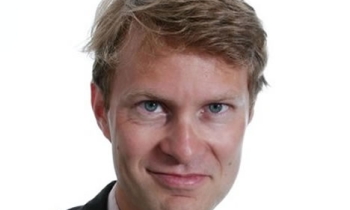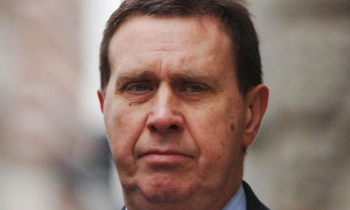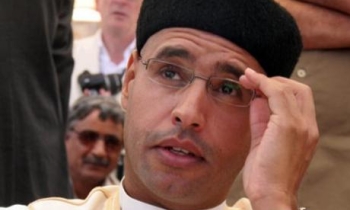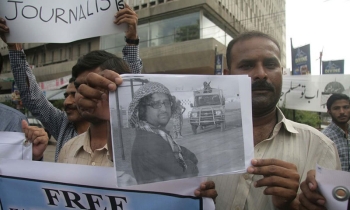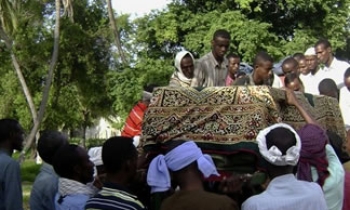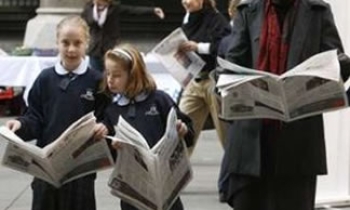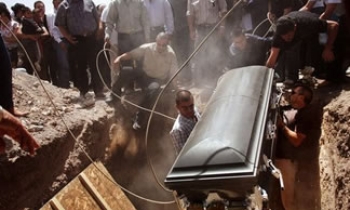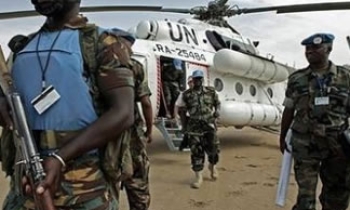"[W]ithout some protection for seeking out the news, freedom of the press could be eviscerated."
-- Justice Byron White, Branzburg v. Hayes, 1972
For nearly forty years, journalists in the United States have been living in a fool's paradise.
The First Amendment's prohibition against laws abridging press freedom, vigorously enforced by an independent judiciary, has meant that the American reporter's ability to gather and disseminate news without interference from the government is unsurpassed in the world. But reluctant news subjects are always looking for ways to stifle the press. Their weapons vary with the times. In the late 1960s and 1970s, the government tried to discourage aggressive reporting through intimidation: tapping journalists' telephones, serving them with subpoenas, and threatening prosecution for publication of leaked information. In the 1980s, powerful public figures used libel suits to try to deflect unflattering coverage. In the 1990s, the focus shifted to claims of invasion of privacy, typically following publication of truthful facts of interest to the public, but which the news subject wished to keep secret.
Attorneys for news organizations scrambled to devise compelling arguments to convince the judiciary that allowing cases like these to succeed would undermine press freedom. For the most part, they prevailed. New York Times v. Sullivan in 1964, the "Pentagon Papers" case in 1971, Hustler Magazine v. Falwell in 1988: in these and other instances, the Supreme Court recognized that, in order to guarantee an informed electorate, the news media must be protected, given "breathing space," granted the right to be wrong. The high court erected almost insurmountable barriers to direct government censorship, and imposed heavy burdens of proof on those who would sue the press for reputational injury or hurt feelings. For the most part, hefty jury awards were overturned by appellate courts. The philosopher and scholar Alexander Meiklejohn declared it a time for "dancing in the streets." In short, it was the Golden Age of the First Amendment.
But then came the mid-1990s, and the gold began to turn to brass.
New and more intrusive methods of newsgathering, often involving electronic equipment such as video cameras and recording devices, became commonplace. Reporters and their editors, eager to feed the appetite of a voyeuristic public, assumed that the First Amendment would allow them to do anything they wished to get a story.
They couldn't have been more wrong.
Although the Supreme Court articulated progressively tougher standards for plaintiffs trying to sue for libel and invasion of privacy, these decisions focused primarily on the story as published or broadcast. Plaintiffs' lawyers knew that as long as the report in question had some modicum of public interest, obtaining any kind of relief or recompense would be difficult if not impossible.
But there is a catch to this rule. To invoke full constitutional protection, the information has to be obtained legally. Accordingly, ever-resourceful plaintiffs' lawyers focused their attacks not on the content of the story, but on how the press got it. Did the reporter use a hidden camera or a hidden microphone? Was she less than forthcoming about her identity, or her purpose in seeking entry into private property, or obtaining an interview? Did he induce a source to violate confidentiality agreements with an employer? Did she violate a criminal or civil statute in the course of gathering news? If so, the argument goes, the First Amendment offers no special protection to journalists. They are subject to the laws just as any other citizen would be.
In case after case, courts refused to recognize any special privileges for journalists to enter private property, especially under false pretenses. In the most infamous example -- Food Lion's lawsuit against Capital Cities/ABC for Primetime Live's hidden-camera story about alleged unsanitary conditions in grocery stores -- the Fourth Circuit Court of Appeals upheld the grocery chain's claims for trespass and so-called "breach of duty of loyalty." The court found that when the network's employees misrepresented their reasons for seeking jobs with Food Lion, they no longer had the right to enter the store's non-public areas.
The Food Lion court dismissed the plaintiff's claim for fraud, primarily because of the language of the relevant state statutes. But in 1998, a Minnesota appellate court allowed the operators of care facilities for the mentally retarded to continue a lawsuit against WCCO-TV. Its reporter had applied for a position as a volunteer, representing herself as unemployed. Using a hidden camera, she videotaped activities at the center, and the footage was used in news reports. The court found that the reporter's failure to disclose her status as a journalist was misrepresentation amounting to fraud.
The same year, a jury in Maine awarded $150,000 in damages to Raymond Veilleux, owner of a trucking company, after a reporter for Dateline NBC accompanied one of his drivers on a cross-country trip. Veilleux claimed that Dateline NBC had promised that the story would portray long-distance truckers in a favorable light. Instead, the broadcast revealed that the driver had violated federal regulations and tested positive in a random drug test. The First Circuit Court of Appeals ruled in March that the alleged promise to provide "positive" coverage was too vague to justify a charge of misrepresentation. But it upheld a separate claim based on the jury's finding that NBC had induced the truckers to participate in the story by assuring them it wouldn't interview an activist group critical of the trucking industry's safety practices. NBC denied making the promise and argued, to no avail, that investigative journalism would be inhibited if news organizations had to litigate disputes about what promises they had made to sources. Journalists should not have "a greater license to lie than is enjoyed by other citizens," the court said.
Using a hidden camera and microphones in states where it's illegal, such as California, can lead to civil liability, as ABC discovered when its reporter obtained a job as a telephone psychic, gained access to the "boiler room" of the hotline service, and secretly recorded her conversation with a co-worker. The court found that the co-worker had a reasonable expectation of privacy against "electronic intrusion" in the workplace. In another California case, the state Supreme Court allowed intrusion claims to proceed to trial based on a television show's use of a videotape camera inside an air ambulance to record the transport of accident victims to a hospital. "We are aware of no law or custom permitting the press to ride in ambulances or enter hospital rooms during treatment without the patient's consent," the court said.
And as free-lance journalist Larry Matthews learned, there is no special First Amendment privilege allowing journalists to search for and trade in child pornography on the Internet in the course of newsgathering. The Fourth Circuit ruled that his prosecution under federal law was permissible because the government's interest in protecting children from exploitation includes no exception for journalism.
As troubling as these decisions are, they at least involve instances where the journalists may have violated a law. But what if a journalist is the innocent recipient of the fruits of a crime? Several courts have recently considered whether federal wiretap law is broken when a news organization receives and discloses the contents of intercepted telephone conversations -- even if it did nothing to encourage the illegal taping itself. In Bartnicki v. Vopper, the Third Circuit Court of Appeals followed Supreme Court precedent and found that protecting communications privacy does not justify punishing those who merely disclose, but do not unlawfully intercept, a telephone conversation. But in another case, Boehner v. McDermott, the D.C. Circuit concluded that disclosure to the press of an illegal tape recording is not "speech" protected by the First Amendment. This ruling is particularly chilling in light of current legislative proposals sponsored by Republican Senator Richard Shelby of Alabama that would criminalize leaks of classified information to the press. It raises the possibility -- seldom seriously considered since the end of the cold war -- that a news organization could be prosecuted if it knowingly publishes such material. The Supreme Court will review the Bartnicki case this term.
In many respects, this sad litany of losses and setbacks is symptomatic of a fundamental problem. To journalists, it is self-evident that investigative reporting informs the public, exposes corruption, and rights wrongs. They argue that these important ends justify the use of virtually any means to achieve them. But the judiciary isn't buying that. The essential watchdog role that the press should play in a democracy is lost on many of them.
In Wilson v. Layne, the "ride-along" case decided by the Supreme Court in May 1999, Justice William Rehnquist wrote that the media's presence during the serving of an arrest warrant in a private home had no legitimate purpose. Similarly, in Lauro v. City of New York, a federal district judge in Manhattan upheld a claim that a "perp walk" violated a suspect's Fourth Amendment rights and merely sensationalized the facts of his case. The court did not recognize that the presence of the press could promote public understanding of how the criminal justice system works.
At the heart of the landmark First Amendment rulings of the 1960s and 1970s was a profound respect for the role of the independent news media in a democracy. This led jurists like William Brennan to recognize privileges for speech that had never enjoyed constitutional protection previously.
Unfortunately, the judiciary has changed. In his dissenting opinion in Dickerson v. United States, last term's case reaffirming the Supreme Court's 1966 Miranda decision, Justice Antonin Scalia sneered at a number of seminal free-speech decisions as articulating "certain overprotective First Amendment rules."
Does that sound like a justice who will forge new protections for the press?
The dance is over.
Jane E. Kirtley is the Silha Professor of Media Ethics and Law at the University of Minnesota's School of Journalism and Mass Communication. From 1985-1999, she was executive director of The Reporters Committee for Freedom of the Press. She is also a First Amendment Fellow of the National Press Club in Washington, D.C.

